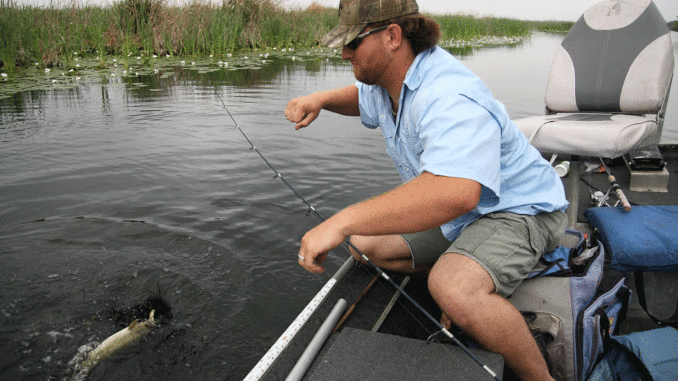
In an effort to determine the impact of angling pressure on bass in the Lacassine Pool, the Louisiana Department of Wildlife and Fisheries implemented a one-time study in 2011. The goal was to tag approximately 1,500 bass that were at least 8 inches and above in size.
“We started tagging about the middle of January last year, and we completed tagging those fish by the middle part of February,” said LDWF biologist George Melancon. “It took us about a month. We were hoping that by tagging a month or so in advance, we would possibly avoid having people see the tags in the fish and actually try to target catching a tagged fish. Evidently, it wasn’t sufficient enough time to have those tags kind of slime over, where you wouldn’t be able to see them.”
Tagged fish were placed in four distinct categories. Eight to 12 inches, the smallest size, were classified as “stock” size. The 12- to 16-inch size were considered quality class. Sixteen to 20 inches was categorized as preferred class, and 20 inches and above were classified as memorable size.
“Aside from creel surveys that we do every so often, we really didn’t have a handle what types of impacts, if any, anglers were having on bass populations,” Melancon said. “It’s an attempt to get some data to show people if there is any effect at all.”
Melancon pointed out the department typically would be asked questions such as, “Why don’t you place a size or slot limit?”
“If you see some of the fish that come out of there, you actually ask yourself, why would you want to do that? It’s pretty good right now, so why try to fix something that’s not really broken as far as I’m concerned. As a fisheries biologist — it’s great.”